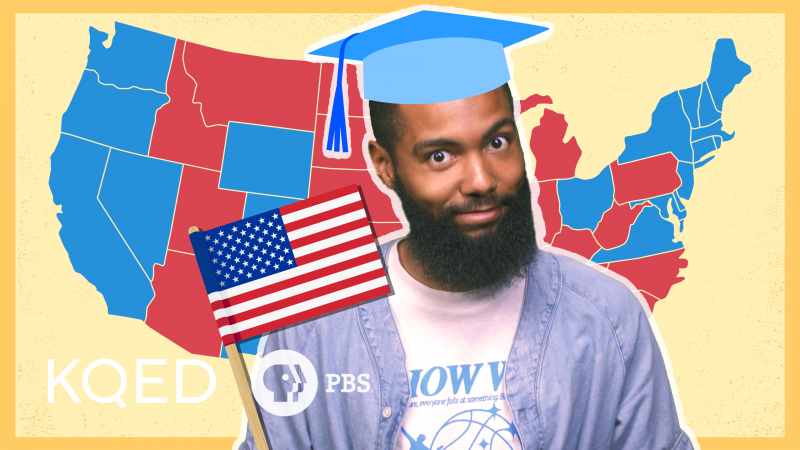This article will be updated through January 2021 with relevant resources for teaching election civics and media literacy. Bookmark me. (Last updated 11/9/20.)
The 2020 election keeps on making history. Despite concerns about voter safety and election irregularities, more Americans of all political parties cast ballots at the highest rate since 1908 with almost no problems reported. When Democrats Joe Biden and Kamala Harris were declared the winners, an analysis showed that young voters ages 18-29, especially young voters of color, made a difference in several key states. Harris will become the first woman vice president and the first Black and Asian American to hold that office.
Ask your students to join the ongoing special election discussion on KQED Learn to share what it’s like to live through this moment in history. Or join KQED’s Youth Media Challenge, Let’s Talk About Election 2020 where students can share the issues they want the Biden administration to focus on.
Vice-President Elect Kamala Harris Makes History
In How San Francisco Shaped VP Nominee Kamala Harris from KQED, students can learn more about Kamala Harris, from her roots in the Bay Area to her journey to the U.S. Senate and primary bid for the Democratic presidential nomination before becoming Joe Biden’s running mate in August. Learn more about the many ‘firsts’ she represents, including the first child of immigrants and the first graduate of a historically Black university to be elected vice president.
What’s Next?
Between an election and a presidential transition is traditionally a time to reflect on the outgoing president’s term and examine the plans of the incoming administration. This lesson plan from the New York Times Learning Network asks students to look back at the last four years and forward to a Biden presidency.
But few aspects of politics have been typical during the Trump administration. President Trump has refused to concede the election and has leveled accusations of voter fraud, which have so far been dismissed by both Democrat and GOP state leaders and in the courts. And while the election went to Biden and Harris, Donald Trump received the second-highest number of votes cast in any election. Students can investigate the results and examine a state-by-state breakdown with these data visualizations from The New York Times. Both senate races in Georgia remain undecided. Learn more about these run-off elections and their implications for which party will control Congress with this article from USA Today.
